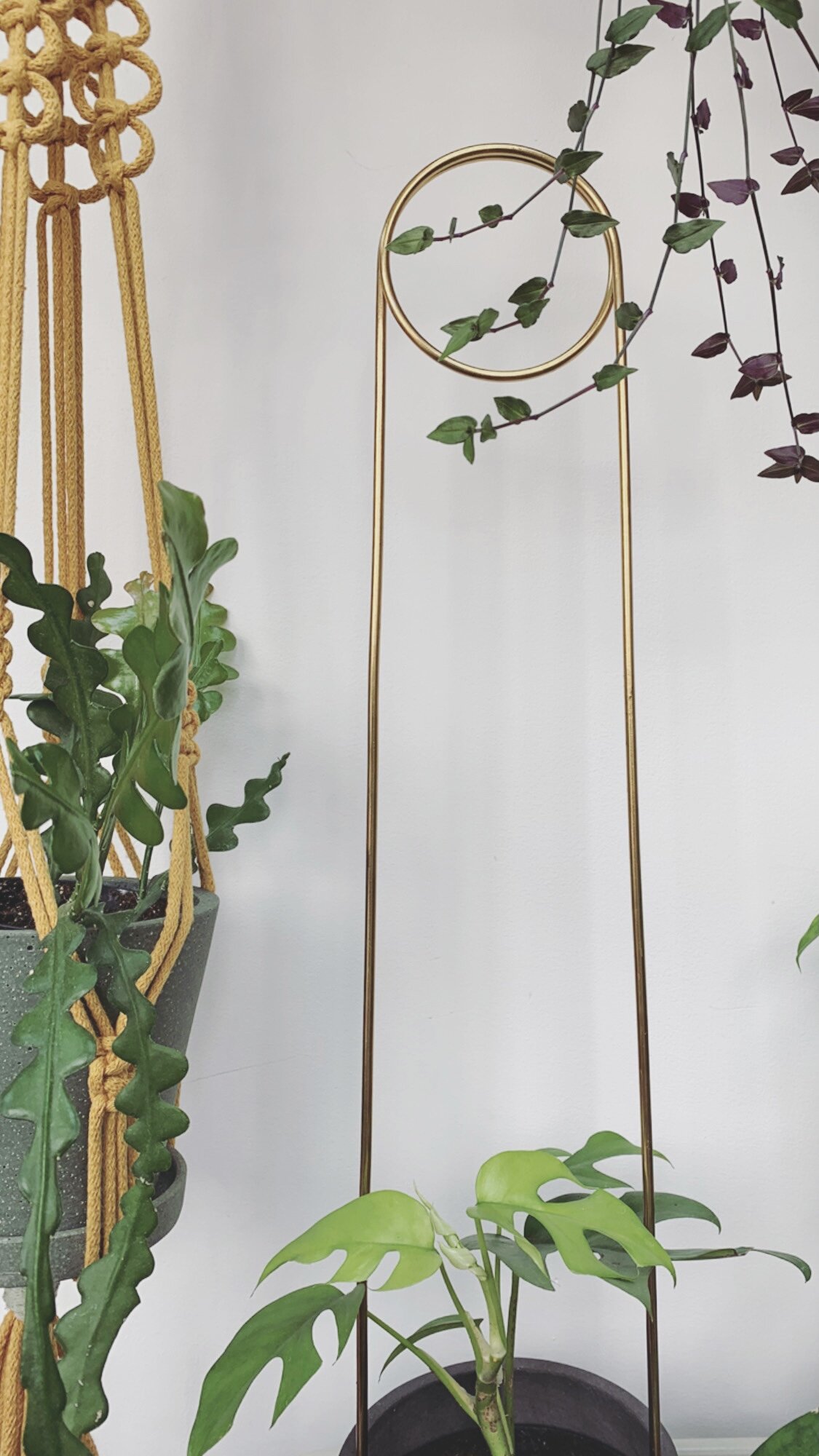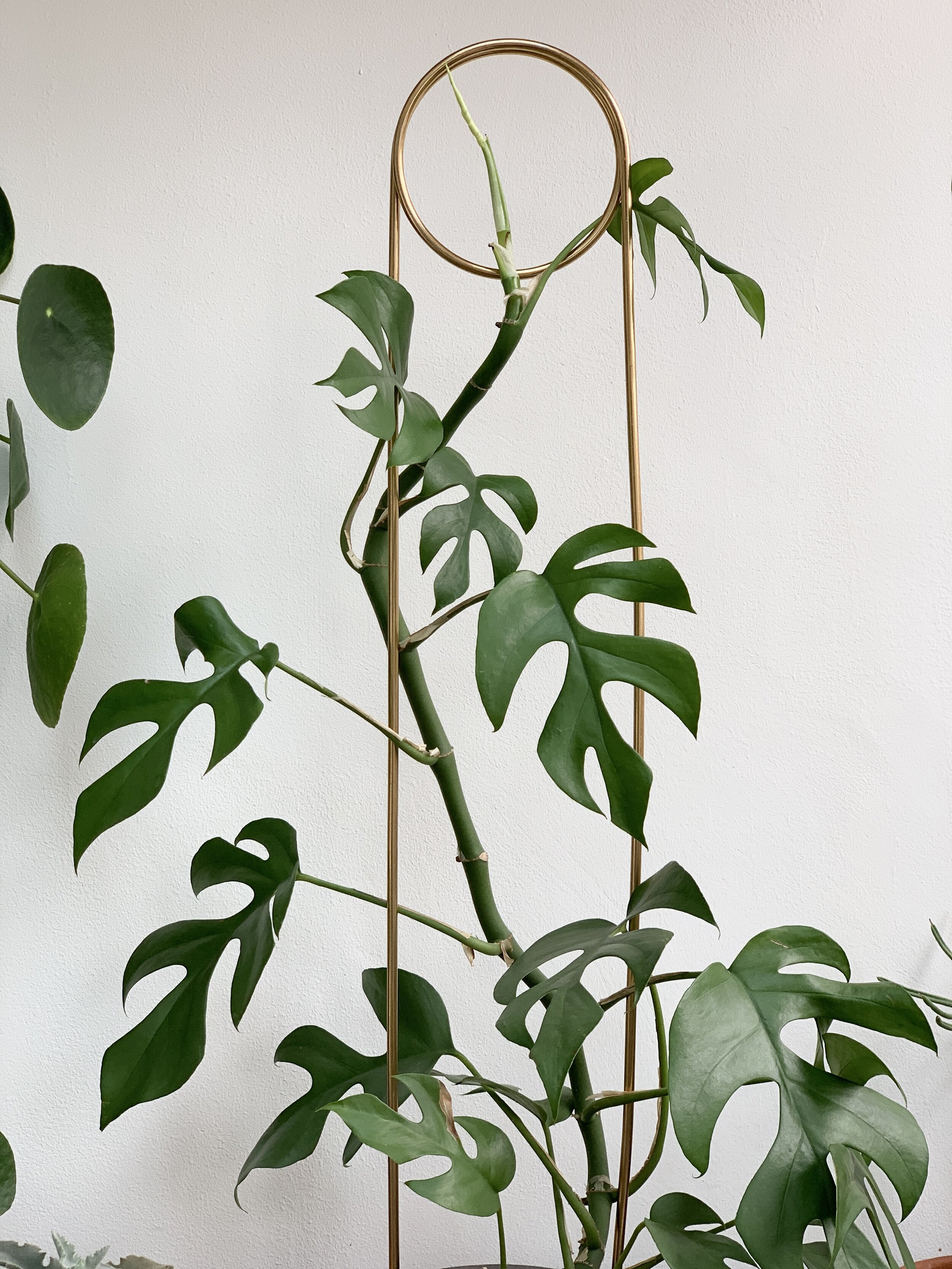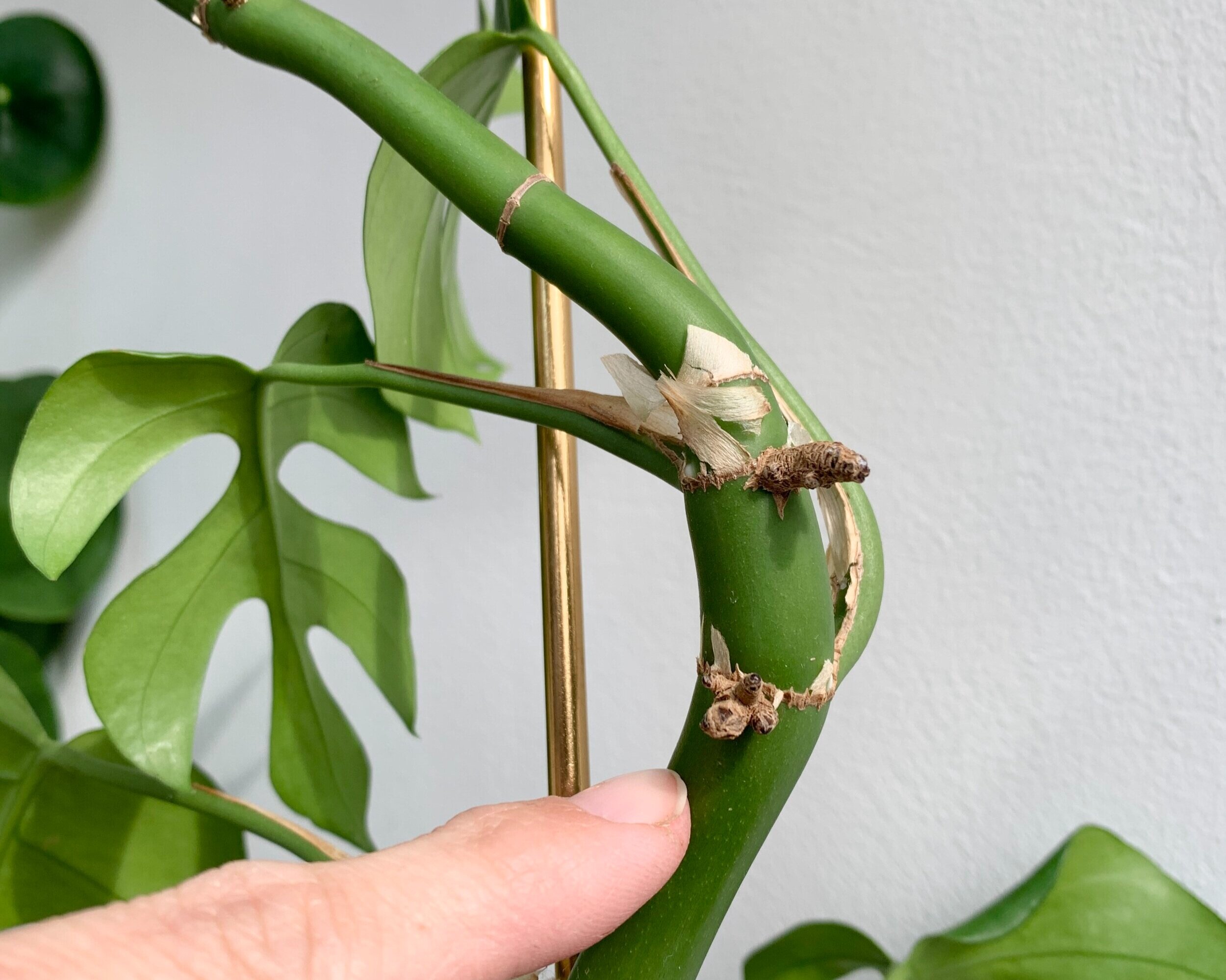There has been a boom in popularity for the Rhapidophora tetrasperma in recent years, and we can see why. It is a really easy to care for and is a fast growing houseplant with a gorgeous shaped leaf.
I have grown my Rhaphi as it is affectionately named from a cutting my sister gave me from her mother plant. My sister’s plant which started as 30cm tall when she bought it in July 2019, is now reaching over 2 meters tall, happily climbing up a wall and reaching across the ceiling.
Mine is yet to reach those lofty heights, but it has quickly become one of the favourites within my collection.
The two photos below show the rate of growth in less than a year. It’s a perfect plant for someone wanting the satisfaction of quick growth.
Native habitat
The Rhaphi is often mistaken for a Monstera or a Philodendron, however, it is a separate genus to both of those, although still an aroid, the Rhaphi is native to Southern Thailand and Malaysia, whereas the Monstera deliciosa is native to Central America.
It is always good practice to know where a plant is native to and the environment it would live in so we can try and mimic those conditions in our homes. The Rhaphi is a climbing plant that sends out aerial roots that can attach to trees within the warm, jungly conditions of its native Malaysia and Southern Thailand, out of direct sun.
A moss pole, plant stake or wall mounted supports will help the plant grow tall like it would in the wild.
Light
As with many houseplants this plant will thrive in bright indirect light. This means near to an east or west facing window will be ideal where it doesn’t receive harsh direct sunlight. Mine sits close to a south facing window which I use with a filtering blind when the sun is shining.
Too much sunlight and the leaves can burn, new leaves would be particularly affected with brown, dry tips. Too little light and growth will be slow and leaves may form without the fenestrations (splits) in them.
By Severin Candrian from Unsplash
Water
Rhapidophora tetrasperma will like the top inch or so of soil to dry out between waterings and for their roots to remain in damp soil (not soggy). Test the top inch or so of the soil is dry by dipping your finger into the soil. Keep in mind that under-watering is far easier to recover from than overwatering!
I water mine roughly once a week in summer (in my dry hot south-facing room) and every 2-3 weeks in winter. As with many houseplants you can stick your finger into the soil to test if it needs water, if the soil is becoming dry then it is time to water. You can tell when the plant is really in need of water as the leaves will start to curl and droop.
I never water my plants whilst they are sitting within their decorative pots, I always take the plant out of the decorative pot (keeping it in the plastic nursery pot) and water it at the sink. I always make sure the water has fully drained away before placing it back into the decorative pot. Watering your plants whilst they are in their decorative pots may mean they sit in water for too long, which will result in root rot.
Rhaphi seem to cope well with tap water, unlike other houseplants particularly Calathea that really prefer rainwater.
Humidity
Despite hailing from a more humid climate of Malaysia and Southern Thailand, this plant can grow happily in our homes without extra humidity. I don’t use any methods to increase the humility around my Rhapidophora tetrasperma, however I’m sure it would be very happy if I did. A bright bathroom would no-doubt be a good place for a Rhaphi.
In winter when our houses become particularly dry from central heating many houseplants will benefit from increased humidity, either by using a humidifier, by keeping them in the bathroom if the light is good, or by placing them on pebbles within a tray of water to increase the humidity as the water evaporates. Grouping plants together will also help to increase the ambient humidity slightly.
Rhapidophora tetrasperma from Canopy Plants
Soil, repotting and fertiliser
Like other aroids, this plant will thrive in a loose, quick draining soil. A good mix would be 1 part houseplant compost, 1 part perlite, 1 part orchid bark.
As Raphis can be very quick growing it will be necessary to re-pot once a year (or maybe even twice a year). The best time to repot is in the spring when the plant is not stressed by the colder winter months and to give it the extra boost it needs for the growing season ahead. You will know when it is ready to be repotted as you will likely see roots growing out of the drainage holes in the bottom of the pot. You could also gently slip the plant out of its pot to take a good look at the root system. If the roots are filling the pot leaving little soil and are growing in a circle around the inside of the pot, then it is time to get potting.
Only increase the pot size a little, go up one pot size or by a couple of centimetres in diameter.
You can feed your plant once a month throughout spring and summer to give an extra boost of nutrients for the growing season. We recommend Liquid Gold Leaf.
Propagation
Another reason the Rhapidophora tetrasperma is such a great plant is because of how easy it is to propagate. I like to propagate plants in water because I just love to see the root growth clearly in the water.
Propagation is best done in spring when the plant is actively growing.
Where to cut for propagation
Here’s how to water propagate a Rhapidophora tetrasperma:
Step 1:
Identify a node on the stem. The node is the section of the stem where leaves grow from. (see image above).
The woody brown protuberances are aerial roots used for stabilising the plant when growing and taking up moisture and nutrients.
Step 2:
Using a sterile knife or scissors cut just below the node. You can remove the leaf closest to the node if you wish to help expose the node as much as possible, as this is where the roots will grow from.
Step 3:
Place the cut stem in a small clear vase of clean water, making sure that not too much of the stem is below the water line, and certainly no leaves in the water otherwise these will rot.
Step 4:
Change the water once a week to avoid algae building up and wait for roots to grow. You should see growth within a month.
Step 5:
Once the roots are a couple of inches long, ideally with secondary roots you are ready to pot the baby plant into the potting mix recommended above. Use a small pot to begin with and try not to let the soil dry out between waterings.
For more simple propagation techniques for other plants see our blog
Toxicity
These plants are best kept out of the way of pets and children as they contain calcium oxalate crystals which is the plant’s defence mechanism against being eaten in the wild. If the plant is digested there can be stomach pain, lethargy and a stinging sensation in the mouth.
We hope this guide helps to grow a happy, healthy Rhaphi, and propagate many others to give to friends.
For other plant care guides see the wealth of information on our blog.







